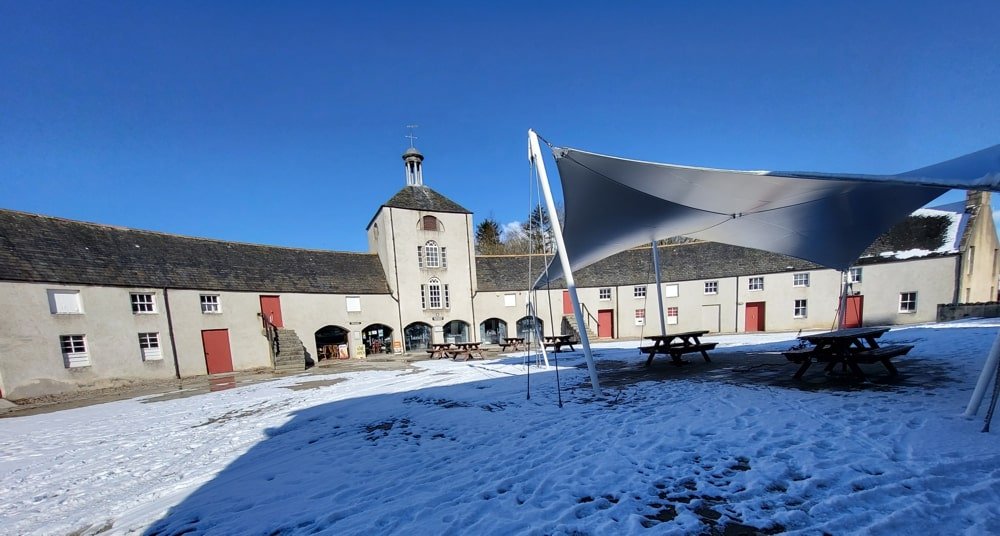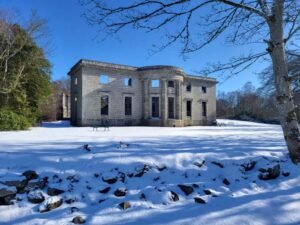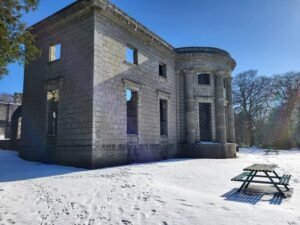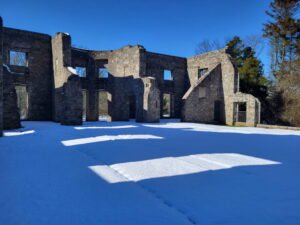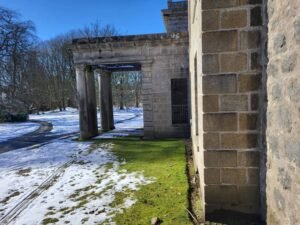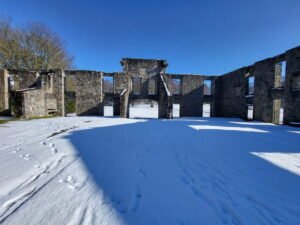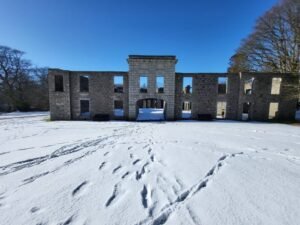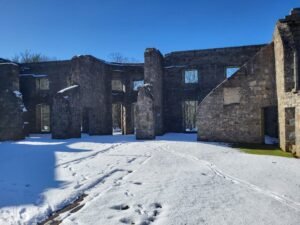The Historic Ruins of Mansion House at the Aden estate built late 18th century.
The Ruins of Mansion House at the Aden estate, Aden Country Park in Mintlaw, Aberdeenshire, built after 1758 and remodelled by John Smith I in 1832 and Aberdeenshire Farming Museum
The mansion house was originally granted to the Keith family in 1324, from whom it passed to the Russells of Montcoffer. Alexander Russell of Montcoffer (1723–98) bought the Aden estate in 1758 from James Ferguson of Kinmundy.
John Smith was a Scottish architect reconstructed the mansion house in 1832 with “a magnificent balustraded west wing and Doric-columned, domed, projecting west bow”.
Alexander Russell’s great-great-grandson, Sidney Russell (1895-1965), was the last Russell laird to live at Aden.
He sold the estate with mansion house in 1937 and moved to Dorset. The Barony of Aden is still held by the Russell family.
The building was requisitioned as a billet for troops during World War II. In 1975 the house and grounds were acquired by the then Banff and Buchan District Council, to form what it is now Aden Country Park.
Geophysical survey carried out by RGC in 2017 around the ruins of the house identified numerous anomalies of possible archaeological significance.
These lie mainly to the west and indicate garden features, including paths and a probable fountain shown on earlier OS maps.
Other anomalies indicative of structures have also been detected to the west of the mansion house.
Ground penetrating radar within the ruins produced mixed results, and there is no clear evidence for an earlier structure.
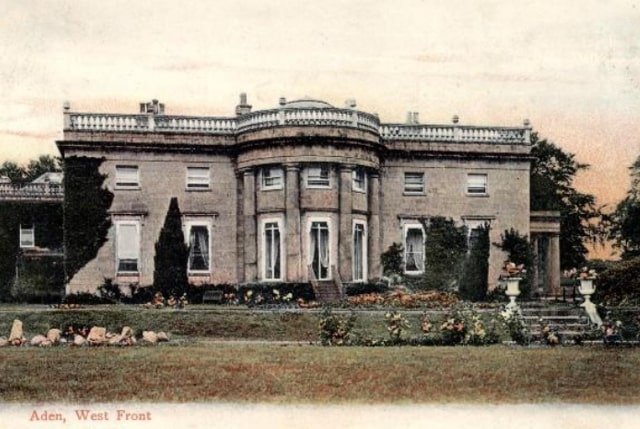
Cameron Archaeology carried out an excavation from 29 April to 12 May 2019.
Twenty trenches were excavated, targeting geophysical anomalies, investigating the current mansion house and searching for evidence of earlier structures.
The main trenching took place in the former garden area on the western side of the house.
Areas of pebbled surfaces and gravel were uncovered indicating surfaces and paths, along with areas where trees had been located, but no evidence of formal planting was recorded.
Little more was determined about the garden, which appears to have been mainly lawn, trees and areas of gravel surfaces.
The excavation of the pond/fountain in the garden area revealed that the concrete base for the fountain was 3 m in diameter and the original pit for the structure was 4 m diameter.
A central garden feature is shown on the OS 1st edition map, but it is suggested that this pond was built in the late 19th century and removed in the early 20th century, prior to a series of photographs. A series of stone-lined drains were also investigated. These were found to be impressive, well-built structures, which would have been capable of channelling large quantities of water from the house and the surrounding area. It is thought that the main west-east drain may pre-date the house, with a later drain constructed after the house, which joined into the main drain and may have taken water from the laundries on the north of the house.
The investigations of the current house ruin, identified an earlier structure on the north side of the house. Stepped foundations may be an earlier phase of the building, but it has not been determined whether any of these pre-date the mid 18th century. Finds of 18th and 19th century domestic waste, included pottery, glass, building material, window glass, brick, ceramic roof furniture and garden furniture remains of ceramic garden planters, plant pots and concrete pond fragments.
Aberdeenshire Farming Museum
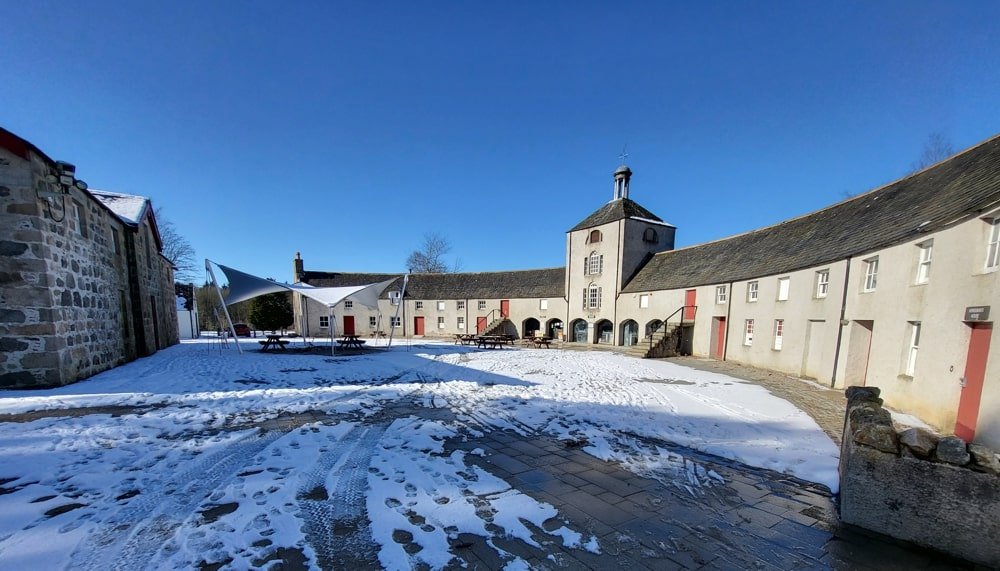
The Aberdeenshire Farming Museum comprises two main features. The early 19th-century semicircular Home Farm steading features interpretations of the 20th-century Aden Estate through costumed guides, and the “Weel Vrocht Grun” (well-worked ground) contains displays about the regional farming history and innovations in agriculture over the last two centuries.
The Hares howe Working Farm was moved to Aden Country Park in the early 1990s. The farmhouse has been restored to a 1950s appearance and guided tours provide demonstrations of cooking and farm activities.
